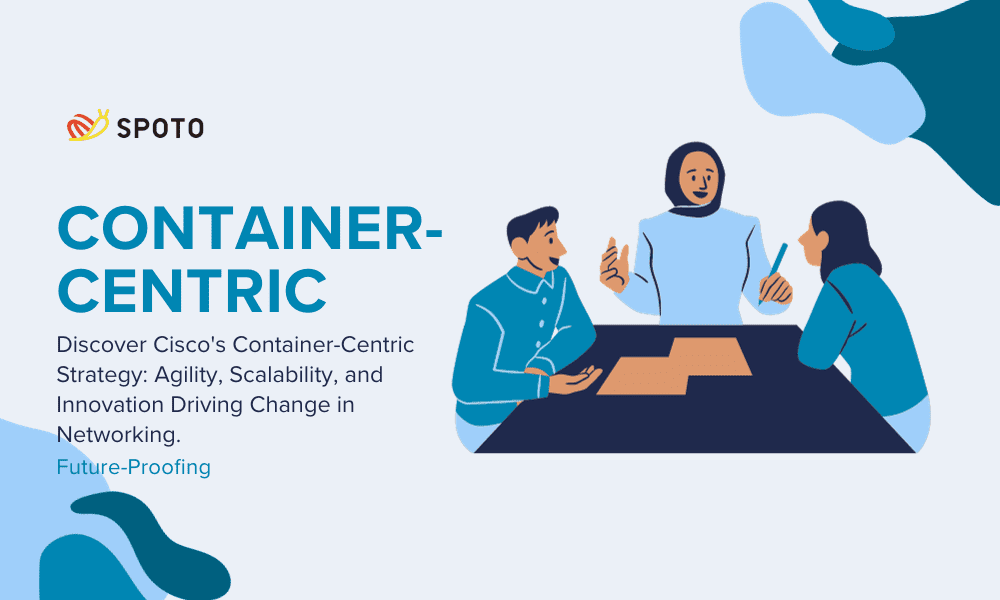
Table of Contents
Cisco is a fan of containers. There's no denying that recent Cisco M&A has been driven by software and container-related purchases, but it's understandable to wonder what they intend to gain. Does Cisco believe they can compete with cloud software and server providers, Are they placing their bets on hosted network components, or what? Perhaps a "tell" about Cisco's strategy is the purchase of Banzai last month.
With its Unified Computing System (UCS) series, Cisco has been in the server market since 2009. Since then, and particularly over the past several years, Cisco has acquired platform software to supplement its hardware position. Initially, UCS was primarily a server tale. Cisco never clarified where they wanted the material to go since they always presented the tale they thought would garner the most positive press.
One company at the forefront of this evolution is Cisco, a global technology giant with a history of shaping the networking landscape. Cisco's recent embrace of a container-centric software strategy has raised eyebrows and piqued curiosity. Here, we will examine the reasons and implications behind Cisco's shift towards containers and microservices.
The Rise of Containers and Microservices:
Before delving into Cisco's strategy, it's vital to understand the significance of containers and microservices. Containers are lightweight, standalone units that package everything an application needs to run, including the code, runtime, libraries, and system tools. Microservices are an architectural approach where applications are composed of small, independently deployable services that work together. This modular approach brings benefits like scalability, easier management, and quicker development cycles.
Cisco's Container-Centric Approach:
Cisco's move towards a container-centric software strategy is a strategic response to the changing demands of modern IT environments. The company recognizes that traditional monolithic applications can be unwieldy and inefficient in the face of dynamic business needs. Containers and microservices offer a way to break down complex applications into manageable components, making it easier to deploy updates, scale as needed, and integrate new functionalities.
So what are they doing?
A second possibility is that Cisco is shifting its focus to a potential network and cloud convergence. Recall that the prevalence of Cisco's revenue is generated by network equipment and that the market for routers has historically provided the company with the highest profit margins. Cisco's core business is under strain due to rising router prices and increased interest in open-model networks from network operators and businesses. Cisco could be making an effort to market servers to clients having new network missions that call for servers and network equipment. Have a look at "carrier cloud."
Comparable to the Seven Cities of Gold, carrier cloud is undiscovered although everyone "knew" it existed. With over 100,000 data centers containing millions of computers by 2030, carrier cloud has enormous potential. It would be the vital driver of new server purchases globally if put into practice. The carrier cloud is best of all sold to carriers, whom Cisco has been marketing to for decades.
Key Factors Driving Cisco's Strategy:
- Agility and Flexibility: Containers enable Cisco to develop and release software in less, more frequent updates. This agility is crucial in a technology landscape where rapid changes and updates are the norm.
- Scalability: With containers, applications can get scaled up or down quickly and efficiently based on demand. This elasticity is particularly valuable in scenarios where traffic can spike unexpectedly.
- Resource Efficiency: Containers share the host system's resources, making more efficient use of hardware. It translates to cost savings and improved resource utilization for Cisco and its customers.
- Hybrid and Multi-Cloud Environments: Containers are inherently portable, making them well-suited for hybrid and multi-cloud setups. Cisco's strategy aligns with the growing trend of businesses using a combination of on-premises and cloud infrastructure.
- DevOps and Continuous Integration/Continuous Deployment (CI/CD): Containers facilitate the DevOps approach, where development and operations teams collaborate closely. The deployment of containerized apps may be automated, speeding the development process, and using CI/CD pipelines.
- Ecosystem Compatibility: Containers offer compatibility across various environments, making it easier for Cisco's customers to integrate their solutions into their existing setups.
Implications of Cisco's Container-Centric Strategy:
Cisco's shift towards containers and microservices carries several implications for the company, its customers, and the industry at large:
- Innovation Acceleration: By adopting a container-centric approach, Cisco can innovate more rapidly, responding to market trends and customer needs with agility.
- Enhanced Customer Experience: Containerized applications are easier to deploy and manage, leading to an improved customer experience as businesses can quickly adopt new features and updates.
- Ecosystem Expansion: Cisco's embrace of containers aligns with an industry-wide movement. This positions Cisco to better collaborate with partners and other stakeholders in the container ecosystem.
- Skillset Evolution: As Cisco transitions towards containers, its workforce will likely evolve to include professionals skilled in container orchestration tools like Kubernetes, reinforcing the importance of upskilling and continuous learning.
- Future-Proofing: Containers are a future-proof technology, providing a foundation for evolving IT landscapes and upcoming technologies. By embracing containers, Cisco prepares itself for the next phase of technological innovation.
Challenges and Considerations:
While Cisco's container-centric strategy offers numerous benefits, it is not without challenges. Ensuring security, managing the complexity of container orchestration, and integrating containerized applications with existing systems tasks require careful consideration.
What outcome does this have?
If you take away the impossible, whatever is left however unlikely must be the answer. All the potential Cisco container drivers are realistic, but we think the first one Cisco wants to gain more foothold in the data center is the most believable. Cisco's preliminary driving force, according to a recent Network World story, is the enterprise data center.
The fact that Cisco already has a connection to the customer in that market gets one convincing defense. Cisco predicts that the enterprise, or the most innovative companies in that industry, will most likely move more quickly than the service providers. It might take years to create and fund a solution for the severe concerns with service provider profit per bit.
The carrier cloud is more cloud than the carrier, and this may be the last and most persuasive argument. Future carrier cloud service features won't be based on network technologies but on standard public cloud technology if there is a demand for it. As a result, a Cisco initiative that addresses the organization's current near-term cloud-native capabilities might later assist carrier cloud aspirations.











